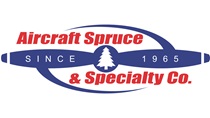Training and Safety Tip: Don’t jack around with frost
Jack Frost is the last person in the world you’d want for a co-pilot. And now that it’s getting colder, he’s likely to show up at your airport and want to fly with you, so allow me to warn you about his character.
Frost—water vapor that has gone from gas straight to solid without stopping in the liquid state—is smooth in appearance, and if you rub your finger across it, you’ll find it light, dryish for ice, and powdery. So some pilots mistakenly think that frost isn’t really a big deal, since, unlike clear ice, it adds no appreciable weight to the airframe, and unlike rime ice, it doesn’t change the shape of the wing.
So what can you do to get rid of frost? Let’s start with what you shouldn’t do: Don’t try to scrape it off with your credit card, like you do with the windshield of your car. You’ll likely scratch the plexiglass on the windshield and windows—and damage the paint on the wings. Not to mention the fact that removing it all would take a very long time, and if the conditions are conducive to frost, the airplane will re-frost as soon as you clear it.
Chemical deicers can do the trick, but they require proper equipment, generally special sprayers that heat the fluid—which should be an approved propylene glycol product—before it is applied. Don’t go slopping winterized windshield fluid all over the place; it contains chemicals that can damage aircraft finishes and fittings.
For ramp-based aircraft, the only way to prevent frost is by covering your aircraft. Keeping an airplane in a dry hangar generally prevents frost; however, high humidity conditions when it is pulled out could turn it into a popsicle before your eyes. So be alert, even if your aircraft is in a hangar.
The best solution is simply to wait a bit. Frost generally forms under clear skies, so just let nature take its course. With a little sun, and a bump in the temperature, Jack Frost will take flight on his own.




